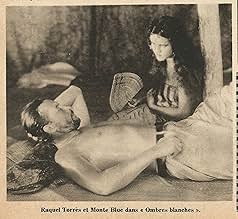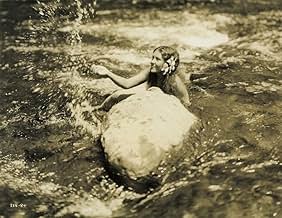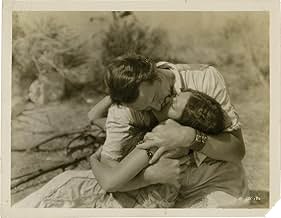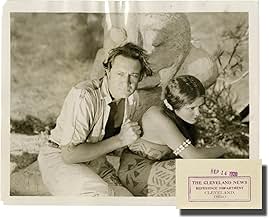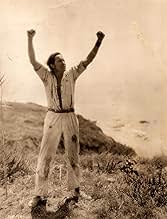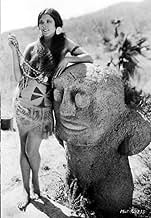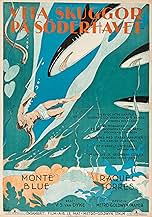IMDb RATING
6.8/10
1.1K
YOUR RATING
An alcoholic doctor on a Polynesian island, disgusted by white exploitation of the natives, finds himself marooned on a pristinely beautiful island.An alcoholic doctor on a Polynesian island, disgusted by white exploitation of the natives, finds himself marooned on a pristinely beautiful island.An alcoholic doctor on a Polynesian island, disgusted by white exploitation of the natives, finds himself marooned on a pristinely beautiful island.
- Won 1 Oscar
- 1 win total
Robert Anderson
- Sebastian - a Trader
- (uncredited)
Renee Bush
- Lucy
- (uncredited)
Dorothy Janis
- Native Girl
- (uncredited)
Napua
- Native Boy
- (uncredited)
Featured reviews
How nice is it to see this treatment, this attitude, of the white man's imperialism towards native cultures in the 19th century, especially when other movies from this time period often had such blatant or casual racism. Here we clearly see the white man as the bad guy, greedy for pearls, exploiting the Polynesians, and spreading disease. It may be over the top and idealized at times, with some non-factual bits such as attacking octopi and grand proclamations against the white race as a whole, but its heart was certainly in the right place, and this notion of which party was evil was certainly correct.
Filmed on location in the Marquesas (or perhaps in reality Tahiti), it shows beautiful footage of the islands as well as the culture, such as people dancing, scaling coconut trees, shaving breadfruit, diving, fishing, and making fire. I'm not an expert but it feels authentic, and without a doubt, it's certainly respectful of the indigenous people. Director W.S. Van Dyke ("One Take Woody", who would go on to an Oscar nomination for "The Thin Man") pulls all the right strings here, from a fantastic typhoon scene, to intimate moments between leading man Monte Blue, and an island woman played by Raquel Torres. Most of the rest of the cast consists of real Islanders. Cinematographer Clyde De Vinna was worthy of the Oscar he won for the visual treats he gives us throughout the movie, and we also get a few bits of sound on MGM's first film with a pre-recorded soundtrack. What a hidden gem this film is for 1928.
Filmed on location in the Marquesas (or perhaps in reality Tahiti), it shows beautiful footage of the islands as well as the culture, such as people dancing, scaling coconut trees, shaving breadfruit, diving, fishing, and making fire. I'm not an expert but it feels authentic, and without a doubt, it's certainly respectful of the indigenous people. Director W.S. Van Dyke ("One Take Woody", who would go on to an Oscar nomination for "The Thin Man") pulls all the right strings here, from a fantastic typhoon scene, to intimate moments between leading man Monte Blue, and an island woman played by Raquel Torres. Most of the rest of the cast consists of real Islanders. Cinematographer Clyde De Vinna was worthy of the Oscar he won for the visual treats he gives us throughout the movie, and we also get a few bits of sound on MGM's first film with a pre-recorded soundtrack. What a hidden gem this film is for 1928.
In this little-known Van Dyke picture, the brilliant cinematography and acting cancel out the shallow plot and seemingly endless 'docu-footage' of the island. What it all adds up to is a very interesting, beautifully shot representation of an exotic place, with a bit of heavy-handed message to make it a story rather than a documentary. There is one exception to this, though, and it is a stunning one: the scene in which the 'white god' teaches the girl to whistle. It is surprisingly intimate, and acted wonderfully well. I recommend this one to fans of early cinematography.
Woody Van Dyke was a prolific director, with many well-loved and classic movies helmed by him. "White Shadows in the South Seas" is one of his best, showing a mastery of camera use and a skill in leading his cast.
Monte Blue was, likewise, a very prolific actor, but his lead role here has to be one of his best, and one of his best performances. He was very affecting, very touching, and even handled the pre-Yakima Canutt fight scenes well.
There is a realism to this movie that caught my attention, even though I am very familiar with the silent genre, having been, for example, a regular for years at the old Silent Movie Theatre in Los Angeles when it was run by the great John Hampton.
As others have commented here, the beauty of the location joined with the quality of the acting and directing make this masterpiece a cinematic experience, and I urge everyone to grab any opportunity to watch it.
Monte Blue was, likewise, a very prolific actor, but his lead role here has to be one of his best, and one of his best performances. He was very affecting, very touching, and even handled the pre-Yakima Canutt fight scenes well.
There is a realism to this movie that caught my attention, even though I am very familiar with the silent genre, having been, for example, a regular for years at the old Silent Movie Theatre in Los Angeles when it was run by the great John Hampton.
As others have commented here, the beauty of the location joined with the quality of the acting and directing make this masterpiece a cinematic experience, and I urge everyone to grab any opportunity to watch it.
Spreading from island to island, the WHITE SHADOWS IN THE SOUTH SEAS corrupt every culture they encounter.
This unfortunately obscure film, produced by MGM right at the cusp when the Silent Era was giving way to Sound, is a fascinating look at the vanishing way of life to be found in the South Pacific Islands. Its beautiful, vivid photography justly won the Oscar for Best Cinematography.
This 'Camera Record' was directed by W.S. Van Dyke, the Studio's on-location master. The film's prologue states "Produced and photographed on the natural locations and with the ancient native tribes of the Marquesas Islands in the South Seas." The footage depicting the pearl divers and the coconut tree climbers is particularly noteworthy.
Monte Blue gives a very fine performance as a derelict doctor who finds himself acclaimed as a white god on an island of gentle, friendly natives. His despair at the arrival of brutish Caucasian traders in this idyllic paradise is riveting. Mexican actress Raquel Torres, in her film debut, is poignant as the island maiden who captures Blue's heart.
This unfortunately obscure film, produced by MGM right at the cusp when the Silent Era was giving way to Sound, is a fascinating look at the vanishing way of life to be found in the South Pacific Islands. Its beautiful, vivid photography justly won the Oscar for Best Cinematography.
This 'Camera Record' was directed by W.S. Van Dyke, the Studio's on-location master. The film's prologue states "Produced and photographed on the natural locations and with the ancient native tribes of the Marquesas Islands in the South Seas." The footage depicting the pearl divers and the coconut tree climbers is particularly noteworthy.
Monte Blue gives a very fine performance as a derelict doctor who finds himself acclaimed as a white god on an island of gentle, friendly natives. His despair at the arrival of brutish Caucasian traders in this idyllic paradise is riveting. Mexican actress Raquel Torres, in her film debut, is poignant as the island maiden who captures Blue's heart.
The very first "sound track" film from MGM..sound effects track added by Doug Shearer, who did the sound recording on about 90% of all the old black & whites. Caption cards are still used throughout the film for the dialogue. Was also actually filmed in Tahiti, which would have been pretty rare for those times. Monte Blue ( plays Doctor Lloyd ) and Robert Anderson (the trader) had been in silent films for years, but this was Raquel Torres' ("Fayaway") first role. In our story, when pearls are discovered in the waters of the south seas, the white men move in to take advantage. The natives are up against the caucasian traders, the critters of the sea, storms, and sickness when it comes to their shores. The story is quite simple, but the outdoor and underwater photography are the high points here. Even with a respectable restoration, different scenes appear in various colors, and the lighting and sound have become slightly spotty. Interesting scenes at the feast, where prior to cooking, the fish is carefully sewn up in leaves to keep it from burning. Where others have despaired over the "documentary" feel to the film, I felt that this was one of the strengths. (Although some of those costumes and dances DO look pretty hokey.) Lloyd lives with the natives, and must decide what his long term goal is, and how to reach it. Several scenes have been sped up, which may have been an effort by "someone" to move the plot along more quickly. Or maybe just newer technology going at a different speed. Directed by WS Van Dyke, produced by Thalberg and Stromberg, all pretty big cheeses in the industry at the time.
Did you know
- TriviaAfter completing filming on the tropical island, they returned to the MGM lot at Culver City, where W.S. Van Dyke shot some additional material, including a typhoon at sea and a shipwreck. Then the studio decided to make Ombres blanches (1928) their first sound film, so they added a synchronized soundtrack consisted of a romantic score by William Axt and David Mendoza, with a few sound effects such as wind howling, a storm, trees ruffling and the words "Hello" and "wait."
This was MGM's first sound picture, and it premiered in Hollywood at Sid Grauman's Chinese Theater on Friday, 3 Aug 1928. It is known for being the first MGM film to be released with a pre-recorded soundtrack.
- GoofsThe drowned young man's left arm moves by itself.
- Quotes
Dr. Matthew Lloyd: For God's sake, go away, Sebastian... these people are like birds... like flowers... they are like man was before he lost the Garden of Eden...
- Alternate versionsThere is an Italian edition of this film on DVD, distributed by DNA srl, "L'UOMO DI ARAN (1934), NANUK L'ESCHIMESE (1922), OMBRE BIANCHE NEI MARI DEL SUD (1928)" (3 Films on a single DVD), re-edited with the contribution of film historian Riccardo Cusin. This version is also available for streaming on some platforms.
- ConnectionsFeatured in Settling the Score (2005)
- SoundtracksFlower of Love
(1928) (uncredited)
Music by William Axt and David Mendoza
Lyrics by Dave Dreyer and Herman Ruby
- How long is White Shadows in the South Seas?Powered by Alexa
Details
Box office
- Budget
- $365,000 (estimated)
- Runtime
- 1h 28m(88 min)
- Sound mix
- Aspect ratio
- 1.20 : 1
Contribute to this page
Suggest an edit or add missing content

